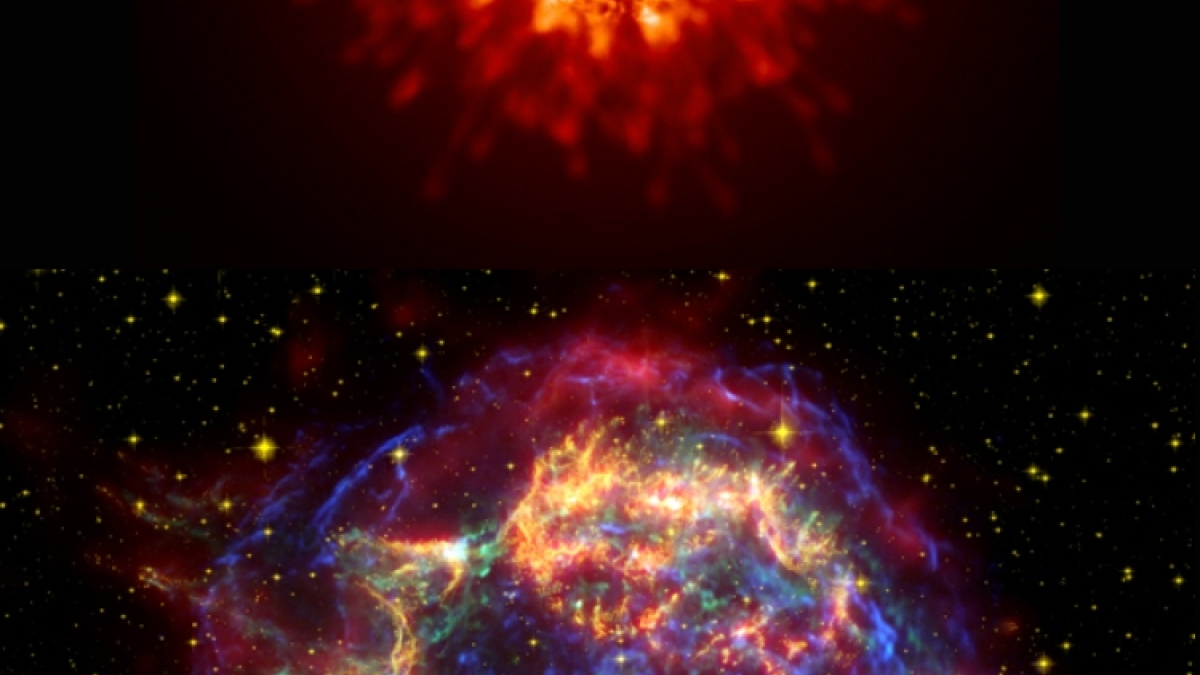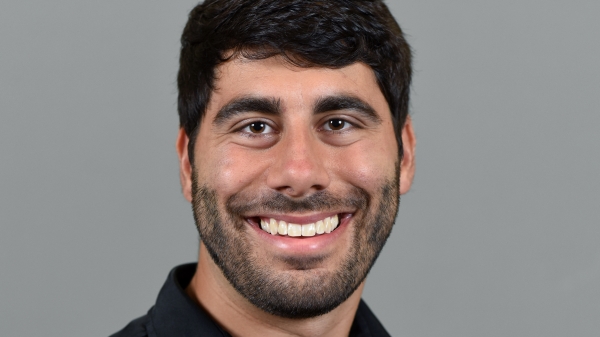'Secret Life of Stars' premieres in 3-D at ASU

Simulation of a bipolar supernova explosion with color corresponding to density (top) and a composite image of the Cassiopeia A supernova remnant from the Hubble Space Telescope, Spitzer Space Telescope, and Chandra X-ray Observatory (bottom). Image credits: Ellinger & Young, ASU (top) and NASA (bottom).
A new 3-D astronomy show, "The Secret Life of Stars," is premiering at Arizona State University's Marston Exploration Theater at the School of Earth and Space Exploration at 7:30 p.m. Jan. 20.
The show takes audiences on a journey through the birth, life and death of stars, exploring white dwarfs, planetary nebulas, supernova explosions, neutron stars, pulsars, and the ultimate fate of massive stars, black holes.
This live-narrated 3-D show will answer questions about where stars come from, how they form, what happens when they die and why humans are made of stardust.
“The Marston Exploration Theater is the next-generation planetarium,” said theater director Ric Alling. “It’s a state-of-the art, 3-D experience combined with live narration.”
The supernova images in the new show were developed by ASU associate professor Patrick Young and feature simulations of supernova explosions performed on the Saguaro supercomputer.
The supercomputer, located on the ASU Tempe campus, is capable of 50 trillion mathematical operations per second.
“ASU is at the cutting edge of simulating how supernovae explode,” Young said. “This is the only place where the public can see the raw data of our simulations and experience supernova explosions in an immersive 3-D environment. It’s pretty dramatic.”
The Marston Exploration Theater is in the school's Interdisciplinary Science and Technology Building 4 (ISTB4) on ASU's Tempe campus. This show will also be featured at 2:30 p.m. Jan. 23. Tickets are $7.50 for adults and $5.50 for students.
For more information about the show, tickets, location and parking, visit sese.asu.edu/public-engagement/3-d-astronomy.
More Science and technology

ASU researchers develop special microphone to verify human speech
Deepfakes have become a large societal concern with the advent of video and audio content generated by artificial intelligence,…

Leading students toward a future of renewable energy
Nicholas Rolston, assistant professor in the School of Electrical, Computer and Energy Engineering, one of the Ira A. Fulton…

SPARCS mission spacecraft bus delivered to ASU for final assembly
The Arizona State University team that is building the NASA-funded Star-Planet Activity Research CubeSat, or SPARCS, cleared a…